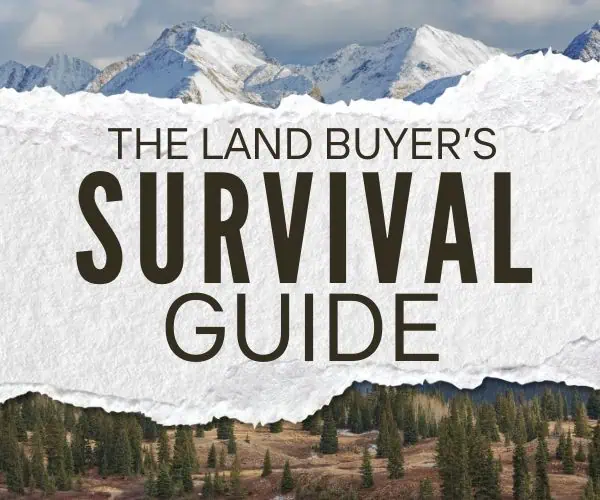REtipster features products and services we find useful. If you buy something through the links below, we may receive a referral fee, which helps support our work. Learn more.
Resources: Chat GPT, LegalZoom DBA, NameCheap, Northwest Registered Agent
If you're in the business of flipping real estate (i.e., buying undervalued properties and selling them at a significant markup), one issue you'll eventually have to address is how to brand yourself as a buyer and how to brand yourself as a seller.
In a very real way, you'll be wearing two separate hats in this business. On one hand, you'll be running an acquisition company that buys undervalued assets from highly motivated sellers. On the other hand, you'll also be running a real estate selling platform where you need to show off these assets in their best light and sell them for much more than you paid.
It's like operating two separate machines that perform completely different duties. Given their inherent differences, it often makes sense to establish two separate brand names for your business to perform these respective roles without confusing your customers.
Disclaimer: Before we go any further, please be aware that I am not an attorney, and this article should not be interpreted as legal advice. Every business and situation contains different attributes that may affect the validity of this approach, so be sure to review this strategy with your legal counsel before proceeding.
What's in a Name?
When I started flipping vacant land, I quickly learned that using a single name as an umbrella for all my buying and selling activity (sharing the same website, phone number, logo, etc.) left the door open to unnecessary problems. It was an open invitation for buyers and sellers to see how they got the wrong end of the deal.
When I bought a property for $5,000, I didn't want that same seller to check back the next day only to see that I was listing it for $50,000.
When you use the same platform to communicate with EVERYONE, you're asking for this kind of trouble.
Of course, there's nothing technically wrong with buying low and selling high, regardless of who sees it (you can read all about the ethics behind our business model here), but how can we avoid these awkward confrontations in the first place?
We can do it by setting up two separate company names so that the buying arm of the business looks like a completely different company than the selling arm, even though everything is happening under the same business entity.
Understanding Trade Names
Did you know that many of the biggest brand names in the world are owned by companies you'd never recognize? For example:
- The brand name Subway is owned by Doctor's Associates Inc.
- The hotel brand Hampton Inn is owned by Hilton Franchise Holding LLC.
- The brand Xfinity is owned by Comcast Cable Communications, LLC.
Why do these big corporations masquerade under one or more different names like this? Because these “trade names” are more memorable, they sound better, make it easier to file for trademarks, and not to mention, they allow one business entity to operate under more than one name, and a lot of companies do it!
RELATED: How to Start Your Own Corporation or LLC (It's Easier Than You Think!)
How to Register a Trade Name
We can do the same thing by registering for a trade name (a.k.a., “assumed name,” “fictitious business name,” “doing business as,” or “dba”) in the state where we're doing business.

When the state approves your registration for an assumed name, you can operate your business entity under this second name. If you've chosen the name wisely, it won't give any obvious links back to the true identity of the legal entity behind the trade name.
Remember that even when your trade name registration is complete, it's still referring to the same business entity. The state will recognize your new name as another unique identifier for your corporation or LLC.
Establishing Your Buying Identity
Let's say you've already registered for an LLC under “Summit Land Properties, LLC” in whatever state you're doing business.
If you wanted, you could either register for a new “assumed name,” or since this name already sounds like a good fit for the buying arm of a land investing business, you could use this given name as the brand for your buying website.
Your domain name could be something like this (assuming it's available):
www.summitlandproperties.com
Your logo could look like this:
You could even get a “vanity” phone number through a service like OpenPhone. For example:
555-4-SUMMIT
And since you would own the domain www.summitlandproperties.com, your email address could be [email protected].
With all of these things in place, the BUYING side of your business would have a pretty solid corporate identity.
Establishing Your Selling Identity
What about the SELLING side of your business? Do you need to create another LLC for this?
Not hardly. This is where your trade name comes into play.
Since you already own “Summit Land Properties, LLC” and it's acting as the brand name for your buying website, it's just a matter of filing for a new trade name to be the face of your selling platform.
Let's say you register for an assumed name of “Grand River Land Company.”
Once the state approves this request, you can effectively operate your company as Summit Land Properties, LLC or Grand River Land Company—and both names will effectively refer to the same legal business entity.
So let's flesh out the selling side of the business… in this case, the domain for your selling website could be something like this (again, assuming it's available):
www.grandriverland.co
Your logo could look like this:
And again, you could get another separate “vanity” phone number through a service like OpenPhone (something like this):
555-GRAND-4U
Note: Vanity numbers are completely optional… I only mention it here to illustrate that it's a good idea to have two separate phone numbers, one for each function of your business.
And again, since you already own the domain www.grandriverland.co, your email address could be [email protected].
As you can see, with a registered trade name, you can refer to your business with one name or the other. To the outside world, it effectively looks like two different companies with no apparent connection, even though everything is flowing through the same bank account and is reported as one entity on the same tax return.
Using the Right Name
Now, keep in mind, in this example, the name “Grand River Land Company” is a fictitious name. It is not the legal name of the business entity—it's just the mask you can wear to showcase the selling side of your company to the outside world.
However, when you buy a property, the actual business entity name “Summit Land Properties, LLC” would have to be listed on the deed as the Grantee (buyer). Likewise, when the property is sold, the Grantor (seller) would AGAIN be listed on the deed as “Summit Land Properties, LLC.”
When it comes to signing contracts or other legally binding documents of any kind, the “trade name” doesn't enter the picture.
As Wikipedia explains it,
Fictitious business names do not create legal entities in and of themselves; they are merely names assumed by existing persons or entities. Legal agreements such as contracts are normally made under the registered legal name of the business or owner, and the legal name must be used whenever a business sues or is being sued.
In other words, you would always use the legal business name (i.e., Summit Land Properties, LLC) when filling out legal paperwork, making offers, or signing contracts on behalf of your company. You'll only use the trade name (i.e., “Grand River Land Company”) to act as the brand name of your selling operation when you hold your company out to the public for that purpose.
Creating a Clear Separation
Remember, the whole point of this process is to have two completely separate platforms: one to handle the buying activity and another to handle the selling.
When a seller lands on your buying website and submits their property information, there should be no feasible way for them to find your selling website. Likewise, when a buyer lands on your selling website to look at your properties listed for sale, they shouldn't find any links or references to your buying website or company name.
There should be no way for the outside world to make the connection.
Both websites are set up on separate domain names, the look and feel of both sites are different, there are separate phone numbers listed on the contact pages of each site, and whatever email service you use (you don't necessarily need to create multiple email accounts). Still, you should set up domain forwarding for both domains so the “reply to” address references the domain where people are emailing you from.
When you segregate your business activity appropriately, you'll have a much more sustainable and healthy way to communicate with your buyers and sellers in a way that won't create unnecessary conflicts of interest.












